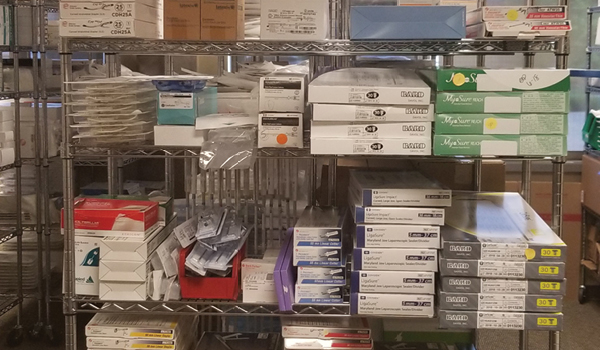Anatomy of Hospital Supply Chain Disruptions

The aftermath of Hurricane Irma, which hit Puerto Rico in September 2017, created a severe shortage of IV bags in the continental United States. The reason: Baxter International, one of the major suppliers, manufactures the products in the U.S. territory and was crippled by the loss of electricity to the island. As a result, many hospitals in the United States suffered an acute shortage of the critical resource.
Hospital supply chain challenges due to extreme weather events are rare but they do happen, says John Kupice, CEO of H-Source, a Spokane, Washington-based company that offers healthcare institutions a way to reduce waste and recover costs. Supply chain problems are especially severe in the operating room, notes the March 2018 Hospital Supply Chain survey from Cardinal Health, a Dublin, Ohio-based healthcare services company.
In the survey, which polled 305 participants working on the frontlines of operating rooms, 69 percent of respondents report that missing supplies caused a delay in patient care. Forty percent had to cancel a procedure or surgery because of insufficient inventory.
"Over the years, major hospitals have moved to just-in-time delivery of supplies so they don’t carry much inventory as a way of controlling costs," Kupice says.
They keep an eye on upcoming caseloads, making sure that supplies are in place for procedures. Hospitals will lean on loans from other institutions in case of a pinch, Kupice points out. Indeed the Cardinal Health survey finds that 57 percent of respondents have resorted to exactly such loans to get them out of a tight situation.
These solutions are not always reliable; 23 percent of survey respondents report a patient experiencing an adverse event because of a lack of the right supplies at the right time.
The problem is not limited to missing supplies alone; about 27 percent of survey participants have seen or heard of an expired or recalled product being used on a patient.
The survey indirectly concludes that the systemic problems could be attributed to human error as 83 percent of all respondents still rely on manual counting in some part of their supply chain and only 15 percent rely on automated RFID solutions. Respondents list controlling costs (39 percent), a significant driver for hospitals, and better patient outcomes (23 percent) among the advantages of automating supply chain management.
Spending on supplies is one of hospitals’ biggest budget line items, Kupice notes. It makes sense, then, that almost all survey participants (97 percent) view supply chain management as an important contributor to achieving the organization’s overall goals.
